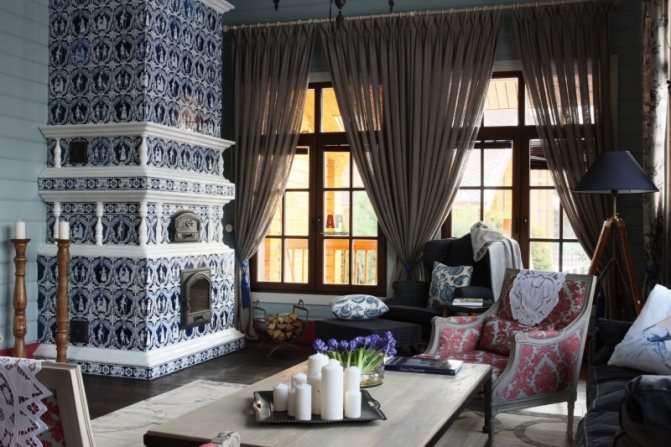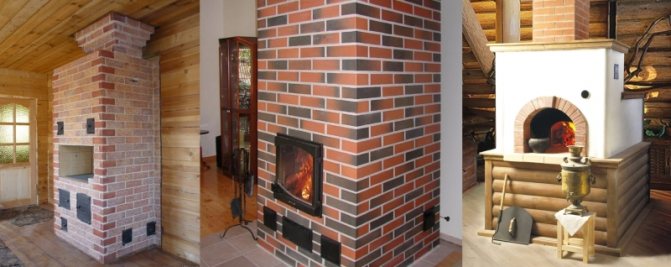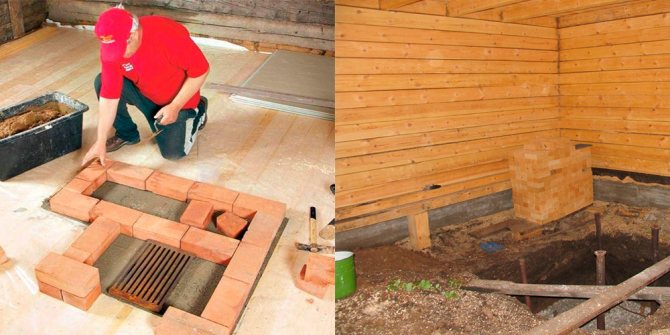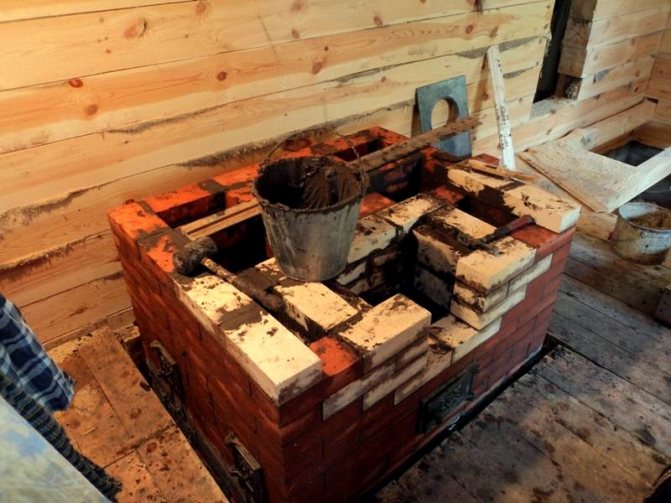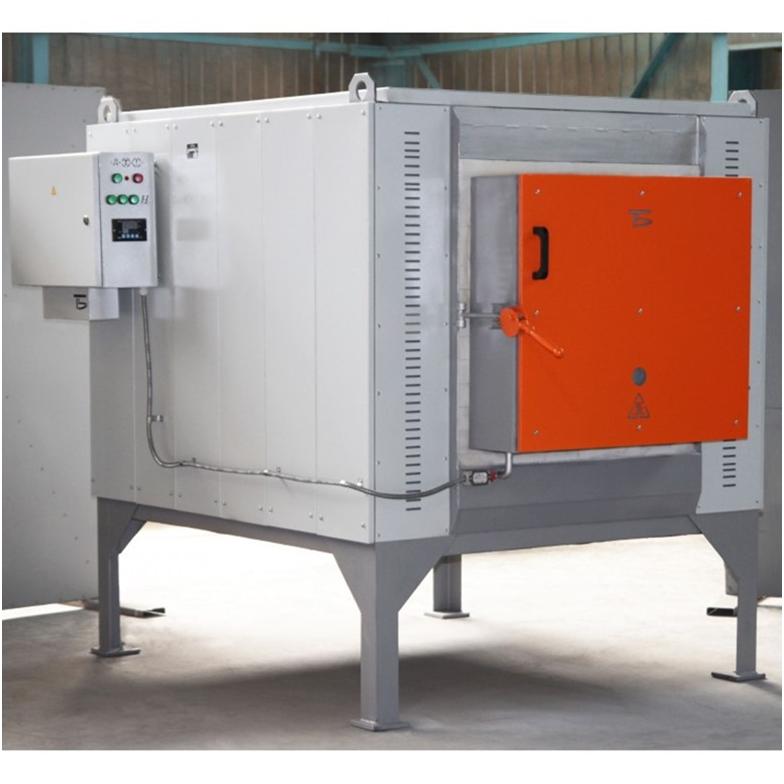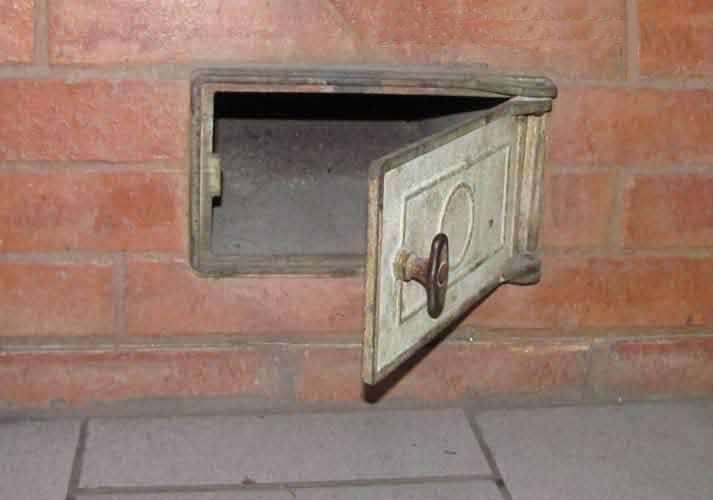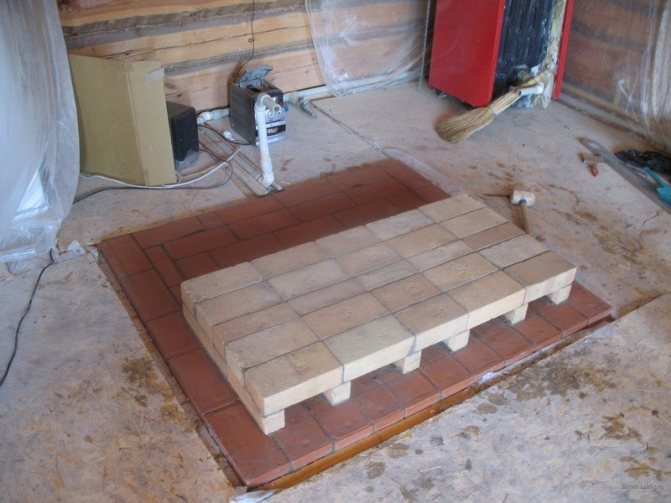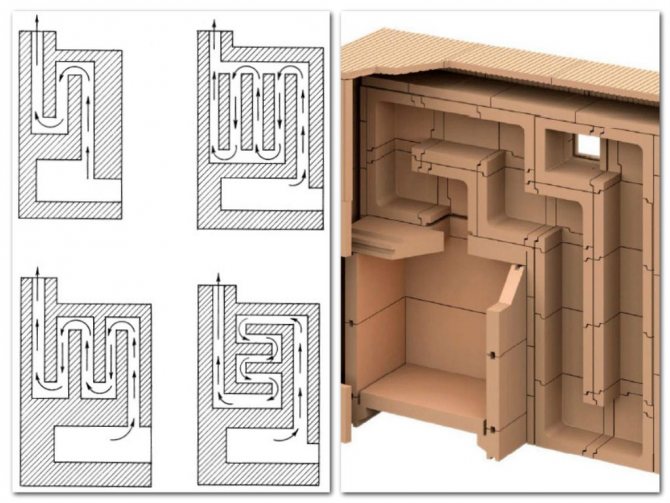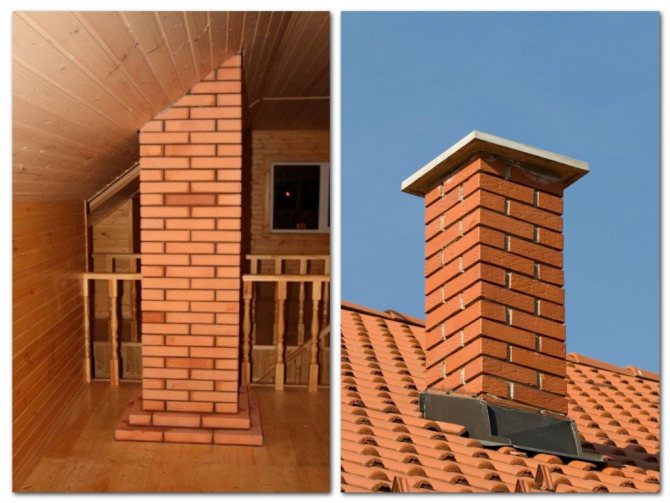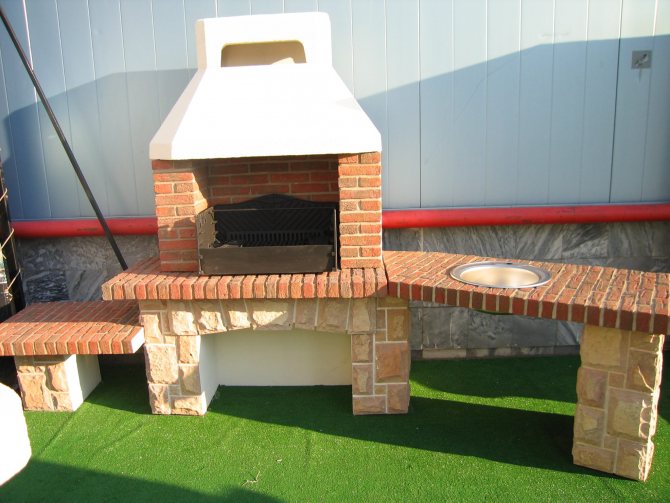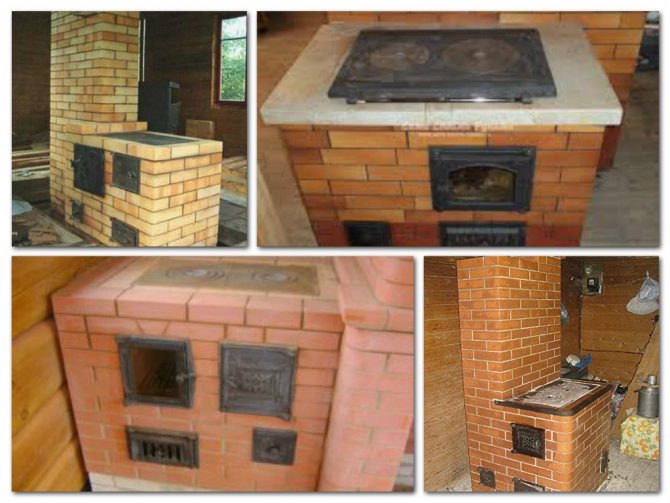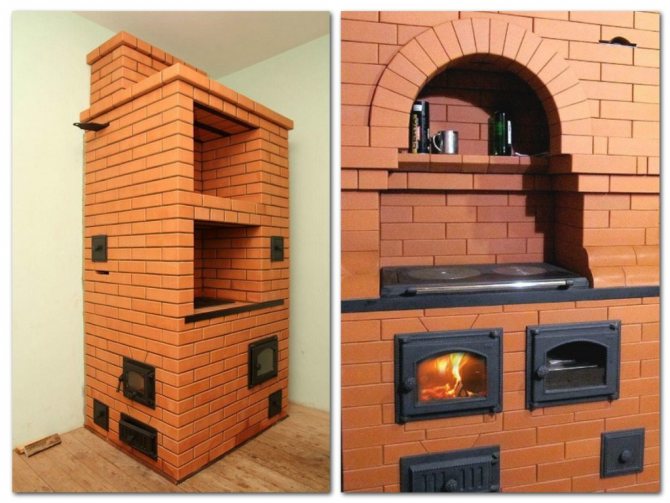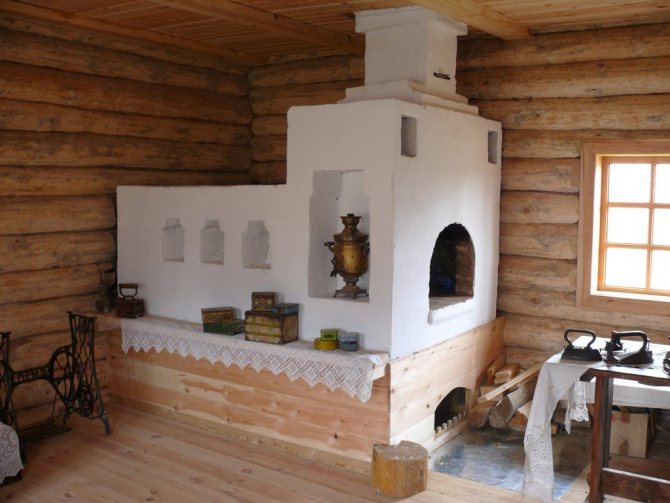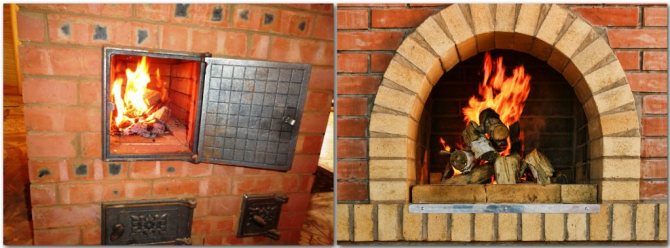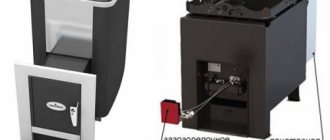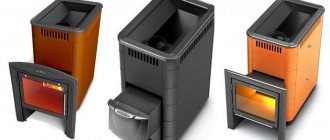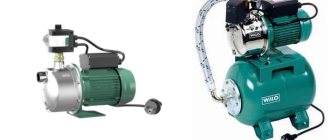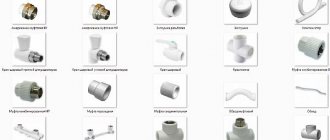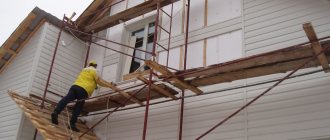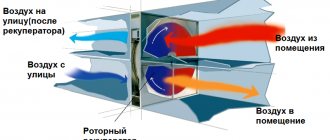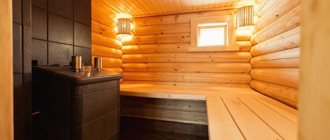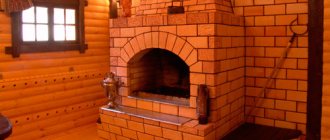The stove is the center, the basis of the heating system of a Russian hut, a European home. Previously used as a heating device, a stove for cooking food. Heating systems made it possible to discard the idea of using stoves, however, residents of private houses, inhabitants of summer cottages, cottages turn to them.
These are not the old-style stoves used by our ancestors. Have upgraded equivalents that perform better.
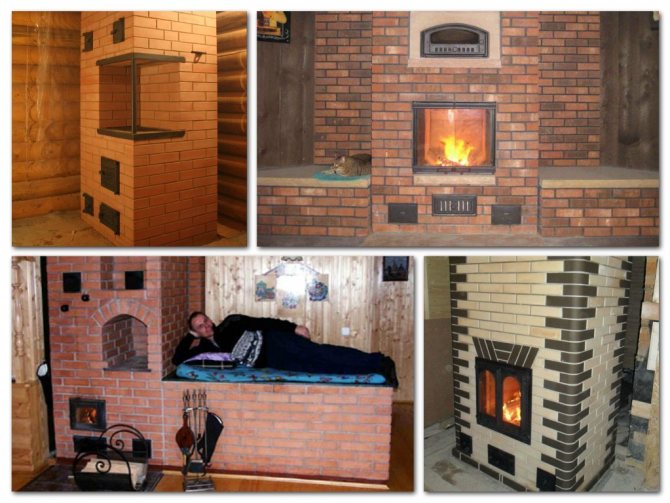
Heating options
Furnace classification principles
The classification is carried out according to several parameters.
Separation principles:
- Place of origin.
Stoves of Russian, Swedish, Dutch types.
- Purpose.
Heating, cooking, combined.
- Material.
Used brick, metal, stone. Near-stone, near-metal materials appeared.
- Device.
The principle of the structure of the furnace. Distinguish between an open view (fireplaces), closed.
- The form.
Corner, polygonal, rectangular, square, round. There are triangular, "complex" shapes.
- Wall thickness.
Thick-walled, thin-walled, combined. The efficiency and power of the furnace depend on the wall thickness.
- Chimney type.
The chimney can be straight, multi-channel, branched. Fire hazard, performance, durability depend on the position of the chimney.
The main types of designs
There are numerous types of stoves, therefore, before direct purchase, you should study all the options and choose the most suitable one.
In this case, it is important to take into account the direct purpose of the structure, since 4 main types are distinguished here:
This option is intended exclusively as a complete and basic heating system for a private house or summer cottage. They are large or small, and the choice depends on the size of the structure itself. The difference and types of fireboxes are also an important parameter when choosing. The design of such a structure is intended for efficient and quick heating of premises. therefore, the walls of the stoves heat up quickly and strongly.
- Heating stove. This option is intended exclusively as a complete and basic heating system for a private house or summer cottage. They are large or small, and the choice depends on the size of the structure itself. The difference and types of fireboxes are also an important parameter when choosing. The design of such a structure is intended for efficient and quick heating of premises. therefore, the walls of the stoves heat up quickly and strongly. As a rule, such structures do not differ in an attractive appearance and a wide variety of fireboxes, and also when they are used for their intended purpose, a lot of fuel is spent, which is usually used as high-quality and properly dried firewood.
- Heating and cooking products for the home. Recently, they have become more and more popular. They are intended not only for heating the building, but also for preparing various dishes. Units are equipped with various additional elements, which include a heating shield or oven, grill or other structures. The variety of furnaces for such ovens made of bricks is considered essential, so you can choose the most suitable option. The dishes obtained on this stove turn out to be very tasty and aromatic, so often people prefer to cook only with its help. Additionally, such ovens are distinguished by good efficiency in terms of space heating. They can be used not only for home, but even for summer cottages.For a long service life of the product, it is important that it is made of high quality and refractory bricks.
- Cooking oven. It is used exclusively for cooking. These products are completely different, and they are equipped with different types of fireboxes. As a rule, the units are supplied with a kitchen stove or grill, a stove under a cauldron or other elements. They have many different functions that are used in the cooking process, making it easier and faster. To create such a product, quite a bit of building material is required, and the entire process of forming an element can be performed on our own. When installing a cooking structure in a small room, it will perfectly cope not only with cooking, but also with heating the room.
- Narrowly targeted varieties of stoves. These include structures intended for installation in a bath or garage, a greenhouse or in other specific structures that require heating. They are also made of high-quality bricks, but they are usually small in size. Their efficiency is at a high level, in addition, they are safer compared to other varieties.
We suggest that you familiarize yourself with Get rid of Odorgon from cat urine
Dutch stove for heating
The circuit was developed in Holland (Netherlands). In shape - rectangular (square), chimney pipe in one channel, completely straight.


Dutch woman
The scheme was spread quickly, it was used in Europe, the Soviet Union. The stove was considered the privilege of wealthy people. Central heating systems displaced her. In the USSR, the Dutch one existed as a means for heating private, country houses, now it exists as an interesting piece of interior, capable of visually giving the room comfort and simplicity.
It is unreasonable to make a stove for the purpose of heating a residential building - the efficiency does not exceed 40%. Suitable for country, country houses.
Benefits:
- The design is simple. There are complex furnaces where errors in laying lead to a decrease in power and efficiency. Dutch works fine.
- Availability of modifications. You can increase the efficiency, functionality of settings, systems, efficiency will not decrease, it will not become colder in a heated room. Several fireboxes can be made.
- Availability. The construction will cost less material than for the Swedish, Russian.
- Heat transfer. With low efficiency, heating of an area of up to 60 square meters is possible. Warming up occurs quickly, the heat is evenly distributed over the area of the furnace, pipe.
- The ability to select the size. You can make the oven small.
In addition to efficiency, firewood is burned worse in a Dutch woman, more soot is formed. The fire hazard is increasing.
An overabundance of firewood in the firebox will lead to an increase in danger - the chimney will not cope with carbon monoxide, will force it to go out through the firebox, get into the air of the rooms.
Why brick construction
Initially, it is important to highlight that brick structures are the most optimal and suitable, and this is due to their good parameters and characteristics. The positive properties of brick stoves include:. brick is a material that perfectly transfers heat to the room with the help of heated walls, which allows you to optimally and efficiently heat rooms; stoves made of this material are capable of accumulating heat, and also, even after stopping the addition of fuel to the structure, they will warm the premises for a long time; if you wish, you can build this structure using high-quality and suitable bricks on your own, since here it is only important to have the optimal and correct ordering, as well as to know how to lay the material, which type of fireboxes and stoves themselves will be chosen, and which solution will be used for masonry ; brick is a material that is resistant to mechanical and other types of impact, as well as safe and durable, as a result of which the resulting structures have a long service life and excellent reliability.
- brick is a material that perfectly transfers heat to the room with the help of heated walls, which allows you to optimally and efficiently heat rooms;
- stoves made of this material are capable of accumulating heat, and also, even after stopping the addition of fuel to the structure, they will warm the premises for a rather long time;
- If you wish, you can build this structure using high-quality and suitable bricks on your own, since here it is only important to have the optimal and correct ordering available, as well as to know how to lay the material, which type of fireboxes and stoves themselves will be chosen, and which mortar will be used for masonry ;
- brick is a material that is resistant to mechanical and other types of impact, as well as safe and durable, as a result of which the resulting structures have a long service life and excellent reliability.
The disadvantages of a brick stove for the house include the fact that it heats up for a long time. therefore, it will be possible to heat a completely cold room after a rather long time after the start of heating of the structure.
Swedish oven and its varieties
The stove is designed in Sweden. Multifunctional - suitable for heating, cooking, drying clothes.
Multifunctionality is associated with the harsh Swedish life - hunting existence, damp climate, constant coolness.
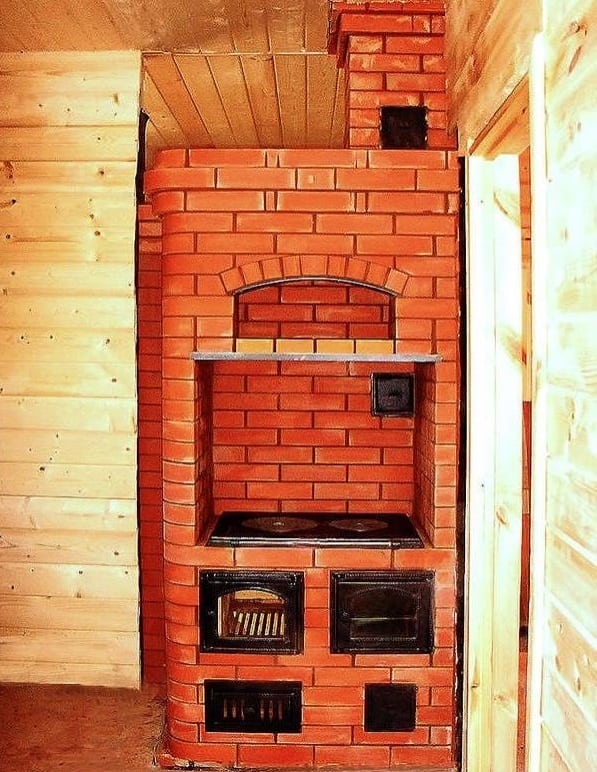

Swede
The Swede is a "hyperbolized" modification of the Dutch woman. It is distinguished by a clear separation between the part of the firebox and the chimney. The chimney is brought back into the "flap". It has one channel, depending on the section, they are divided:
- Vertical chimney.
The channel is directed vertically upwards, but there are 2-3 bends, they are usually called “knees”. The flap warms up unevenly, the front part "runs forward of the locomotive." You will need a pipe cleaning door.
- Horizontal chimney.
The arrangement is horizontal, 2-3 "knees". Warms up evenly, but holes are required. This will increase the cost of stacking the oven.
- With caps.
The most difficult one. The channel has 2-3 chambers in which hot air is retained. Warming up is uniform. A chimney cleaning door is required. The construction of a stove is beyond the power of a beginner.
The Swede has two heating modes - summer and winter. "Switching" occurs by overlapping, opening the damper. Summer means the direct removal of warm gas, bypassing the hoods, channels. In winter mode, the air is trapped in the chambers in order to keep the heat inside the room.
In the southern regions of Russia, modernized versions of the Swedes are used. The model "with hoods" is rarely used, more often the chimney is vertical or horizontal.
When the requirements for care and cleaning of the chimney are fulfilled, the Swede serves regularly, for a long time, the efficiency is higher than that of the Dutch.
Where is the best place to install a brick oven
After familiarizing yourself with the types of ovens and choosing the appropriate modification, it is important to determine the most optimal installation location for it. This largely depends on the size of the brick oven for the house and the area of the room where the device will be located. At the same time, one should not forget about its main function, about the safety of installation and about the number of rooms that need to be heated. Correct placement will allow you to establish uniform and efficient heating of the entire home, as well as its fire safety. Since the weight of the brick structure is quite significant, at the site of its installation it will be necessary to build a reliable foundation that is not related to the base of the house.
Russian stove for space heating
Familiar from fairy tales, folk art. "Small house, Russian stove."
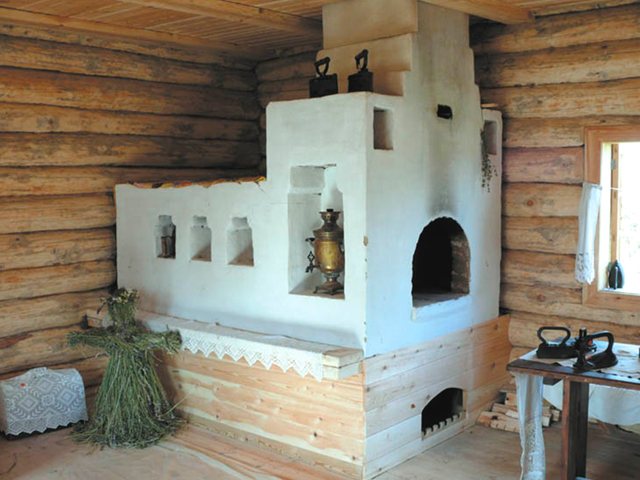

Russian stove
Russian - the record holder for the number of alterations, upgrades, modifications.
"Standard" has an efficiency of 80%.
The indicator is 2 times more than that of the Dutch.
Design:
- The central part is a crucible, a cooking chamber. There is a hole - the mouth ("mouth") or brow ("forehead"). Firewood was put in the hole, a vessel with food was installed - a water pot, an earthen pot.
- Wall-ledge. Serves to separate part of the mouth, crucible, to complete the vault.
- Chimney. Through it, the gas exiting the chamber is discharged. The cooking gas is briefly retained in the cooking gas - this allows it to cool.
Russian is arranged differently when compared with European-style stoves.
Cons of the Russian stove:
- The room warms up unevenly. The temperature is higher at the ceiling than at the floor.
- The design has a high efficiency, but the heat transfer is low, 70% of the "useful" heat escapes into the pipe. Modifications improve heating capacity.
- Massiveness. The stoves occupied half of the hut.
- Long warm-up time. The Dutch woman is warming up quickly, the Russian stove after stagnation will take a day to return to the "working rhythm". Designed for permanent heating.
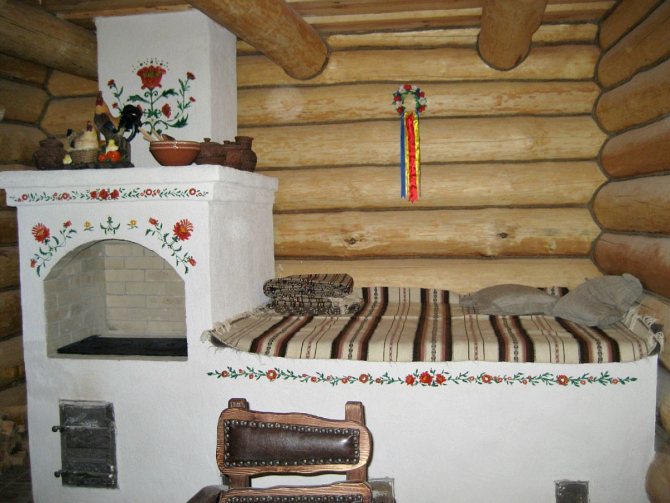

Sleeping bag
The stove is as versatile as the Swedish one, it runs on solid fuel. Melt possibly with straw, dried brushwood.
Advantages of using a brick oven
Brick ovens continue to be in demand, since they are able to quickly and efficiently heat a room and at the same time create a cozy feeling of living, homely warmth.
The main advantage of stove heating, rightly, is considered to be the ability of brick structures to initially accumulate heat, and then slowly transfer it to the surrounding space, maintaining a cozy atmosphere inside the building. Another advantage is the ability to keep the environment dry and warm during the winter. At the same time, the furnace draft will play the role of natural ventilation.
In summer, stuffy hot air is discharged into the ground through the stove foundation and into the surrounding atmosphere through the chimney, keeping the room light, pleasantly cool.
The positive effects of using a brick oven can also include the following points:
- uniform accumulation and release of heat;
- high level of efficiency;
- the presence of bottom heating, which makes it possible to heat the room as a whole;
- high level of security;
- the ability to cook food on the built-in stove;
- long service life.
Counterflow ovens
The efficiency of countercurrent flow reaches 90%. Thanks to the design that makes hot air trap, not immediately rising up.
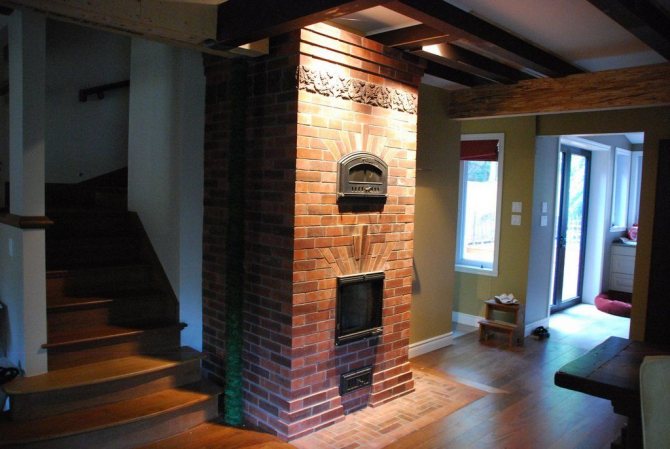

Counterflow model
Vimana oven
Benefits:
- A water boiler, a steam generator, and an oven are installed in the "hood".
- The work can be automated.
- Choice of size.
The stove can be used in apartment buildings.
Stove Grum-Grigimailo
Designed by a Russian stove-maker, thanks to its round shape, it is often stylized as a Dutch one. At the heart of the work is the principle of free movement of gases, which works flawlessly.
Gases enter the top. The hole through which they enter is called hailo. A cap is located above it. Heat transfer occurs in the bell, the heated air rises. Heat accumulates.
Heat storage will continue even if the valve is not closed. Cold air entering through the ash pan prevents hot streams from cooling.
The walls of the groom-grizhimailo are thin, but thanks to the circulation, heat is given off for a long time.
How to choose the right place for the stove
There are no unequivocal recommendations regarding the location of the oven in the room. However, the most reasonable way out in this situation may be to place the structure in the walls of adjacent rooms. This will promote uniform heat dissipation.
It is highly discouraged to place stove devices near the outer walls of the house. In this case, all your warmth will “warm the air outside,” and not your home atmosphere.
After you decide to install the stove, you need to make careful measurements, taking into account several important points:
- The height of the ceilings of the room plays a key role, since the brick oven cannot be restrained in space.
- According to safety regulations, the foundation must be 110-120 mm larger than the base of the heating system.
- When building a chimney, it is important not to rest against supporting beams or floor rafters.
Classification by heat capacity, wall thickness
Having considered the types, having familiarized yourself with the pros and cons, you can consider another classification. Wall thickness and heat capacity are interrelated concepts.
Heat capacity - the ability to store, give off heat. Furnaces are not designed to burn continuously.
The thickened wall helps to increase the heat capacity. The Russian has the highest parameter - the structure is massive, it helps to retain heat in the room after the fire inside has died out.
Thin-walled ones seduce inexperienced owners with their lightness and size. Often simple. The walls are at least 6.5 cm thick. The efficiency is low, it is not possible to increase it. It gets colder in the room after 2-3 hours from the moment the kindling dies out. Thin-walled ones are suitable for heating on a cold summer night during a summer residence.
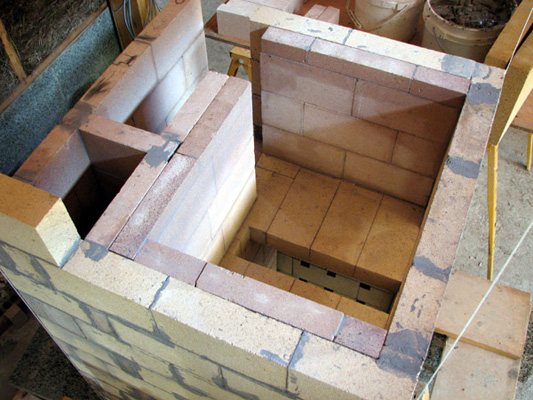

Masonry thickness
You can choose a stove based on the purpose of the installation. It is necessary to take into account the dimensions of the structure, the territory intended for heating. The stove should improve the quality of life, not bring additional problems.
Design features of industrial furnaces


The main element of the furnace is a functioning pressure chamber, isolated from the environment. Outwardly, it looks like a huge oven. The processed raw materials or products are placed in this chamber, and then the device is turned on using certain technological parameters.
Additional equally important elements of electric furnaces are:
- Construction and engineering structures (casing, frame, foundation).
- A heat sink that safely cools recycled products.
- Automated control system of those. processes.
- Electricity and fuel supply devices.
- Chambers for utilization of combustion products and surplus heat energy.
- Conveying system.
- Devices loading raw materials and removing combustion products.
Furnace manufacturers continue to improve devices to this day in order to increase their productivity, durability and reduce the cost of those. maintenance, cost of the structure and its repair.
Marking and manufacturing of the foundation
The massiveness of brick structures requires special conditions for construction, the main of which is a solid foundation. This will ensure its "longevity" and high-quality functioning.
The foundation must be poured on dense and stable soil. This is done to prevent the furnace from settling. For this purpose, about 70 cm of a loose fertile layer is removed from the soil.
The dimensions of the base should be 9-15 cm larger than the base of the furnace.
Do not under any circumstances tie the foundation of the house and the stove device. This can lead to its destruction.
The depth of the foundation reaches 1 meter, and the difference between its upper edge and the future floor should be about 14 cm.
Between the base itself and the stove for waterproofing, it is necessary to lay several layers of roofing material. This is done to avoid overexpenditure of the fuel resource in the future. Which can lead to the absorption of moisture by the oven itself and its destruction.
You can also make a foundation of rubble stone or brick. With this solution, there is no need to lay the formwork in a pre-prepared foundation pit. It will be enough to pour concrete mixture with each new layer of the cleaned stone. Be careful not to leave voids when spilling.
The surface of such a base is gradually leveled before the next phase of work.Next, two layers of bricks are laid, and after drying, layers of waterproofing roofing material are laid.
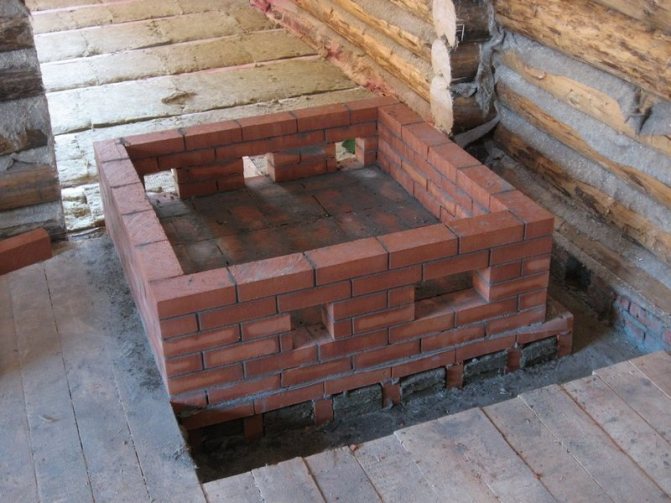

What heating structures are built from
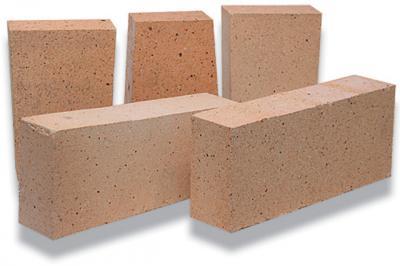

Furnace elements that are exposed to high temperatures are made of fireclay bricks
In the manufacture of the furnace, especially its critical parts, it is recommended to use exclusively red brick of the highest grade with a size of 6.5x12x25 cm. It must have the correct geometric parameters, be free from defects and inclusions of lime particles.
To tie the masonry, use ordinary red clay or special mixtures based on it. It is desirable for the clay to have as high a melting and sintering temperature as possible.
Ceramics, asbestos cement, hydro- and heat-insulating materials, as well as specialized wire are used as auxiliary materials.
Criteria for choosing a stove for the home
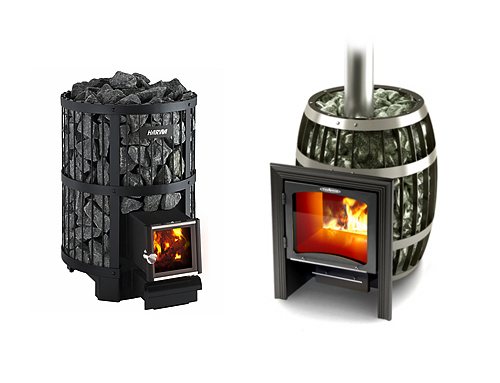

For the bath, you can choose a compact metal model
When equipping wood heating in a house, it is necessary to analyze several points:
- The purpose of the brazier - the most versatile is a combined building, which is designed for cooking and heating the room; various models of Swedes will be an excellent option here.
- Overall dimensions - large structures of the Russian type are not suitable for small rooms, and Dutch women will not heat spacious rooms.
- The type of fuel - the duration of combustion of the furnace largely depends on this - the longer the period of operation of the unit, the more refractory its components should be.
Analyzing the types of sauna stoves, you should pay attention to metal products. They are compact, do not require the construction of a foundation, quickly heat up the room and will cost the owner much less than brick-built ones.

